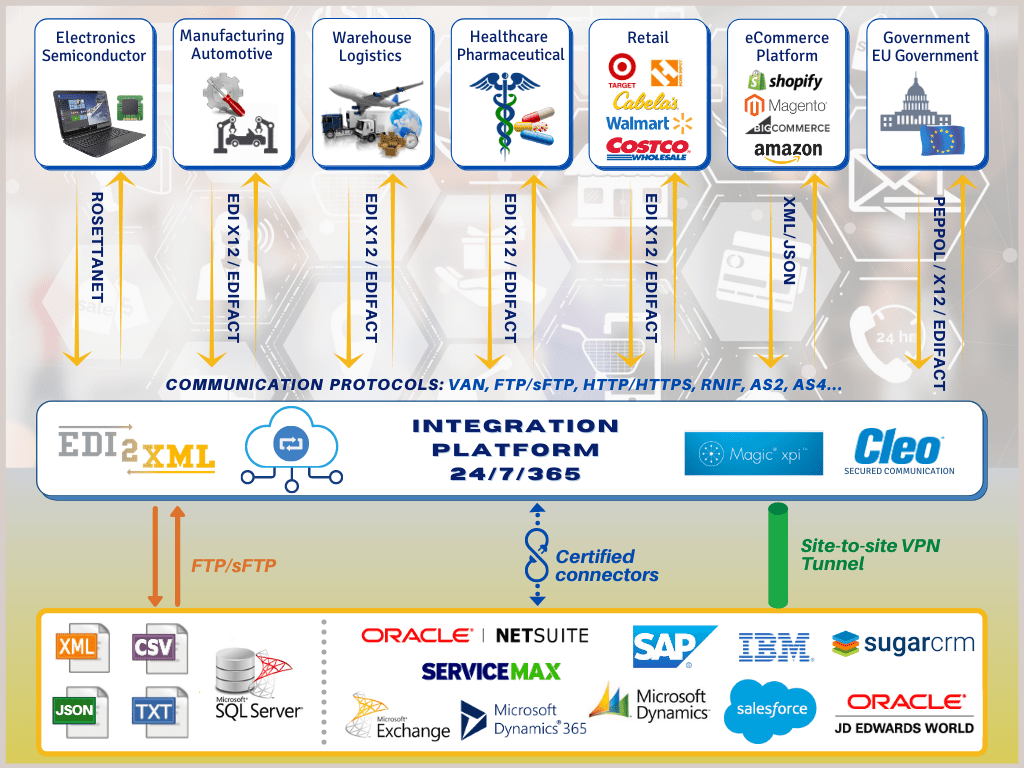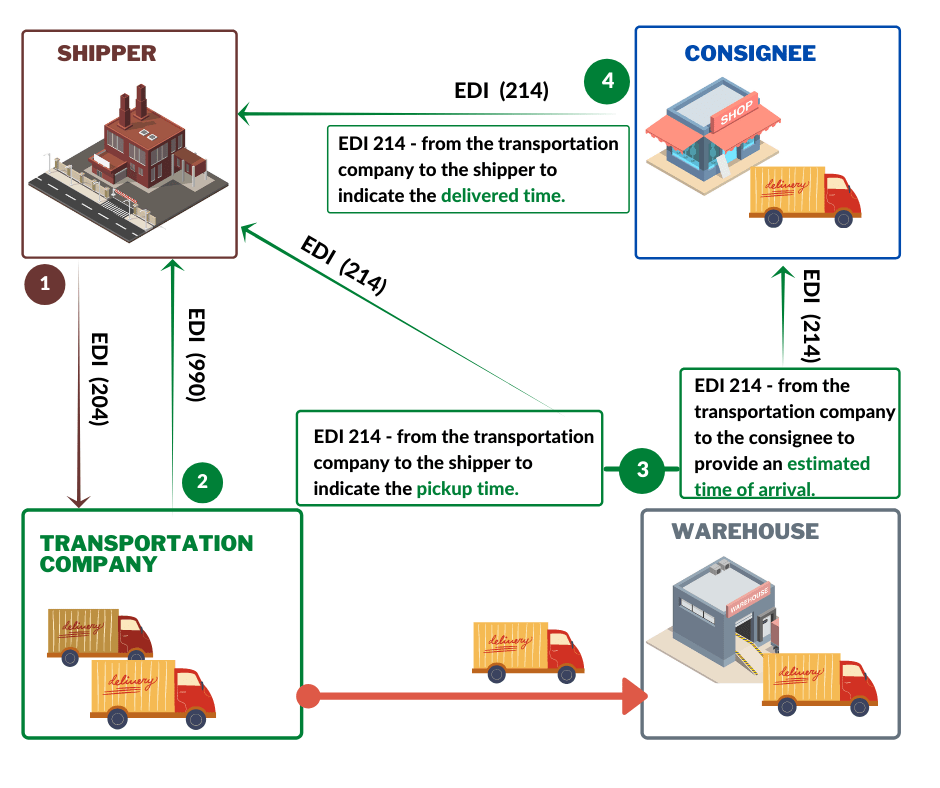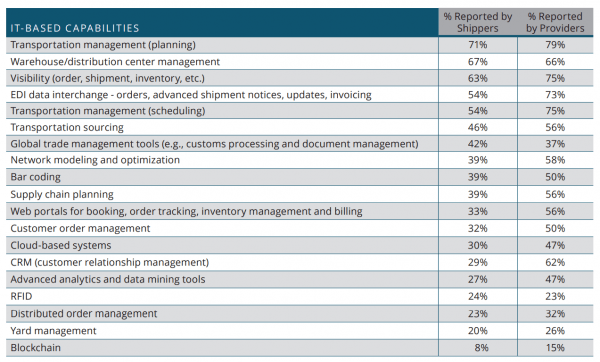Electronic Data Interchange (EDI) in logistics refers to the electronic exchange of business documents, such as purchase orders, invoices, shipping notifications, and other data, between different organizations in the supply chain.
EDI plays a crucial role in improving the efficiency, accuracy, and speed of information exchange in the logistics and supply chain management process.
EDI Standards
EDI relies on standardized formats and protocols for data exchange. Common EDI standards include ANSI X12 and UN/EDIFACT. These standards ensure that business partners can understand and process the data exchanged.
Dive into the world of EDI (Electronic Data Interchange) with our insightful video explanation. Explore the video now
Benefits of EDI Integration in Logistics
EDI Integration continues to revolutionize the transportation and logistics industry and offers a multitude of benefits for transportation and logistics operations. Let’s explore some key advantages:
1. Enhanced Communication
EDI fosters real-time communication and data exchange between various stakeholders, including shippers, carriers, and 3PL providers. This instantaneous information flow ensures that everyone involved is on the same page, reducing errors and delays.
2. Paperless Transactions
In a world still grappling with paper-based systems, EDI brings the advantage of digitization. Gone are the days of manually inputting information into ERP or CRM systems. With EDI, all transactions are automated, eliminating inaccuracies and time-consuming data entry.
3. Streamlined Documentation
One of EDI’s primary roles is the exchange of essential shipping documents like bills of lading, packing lists, and customs declarations. This simplifies the documentation process, minimizes errors, and accelerates the entire shipping workflow.
4. Improved Cost Efficiency
By automating data exchange, EDI reduces the need for manual labor and minimizes the risk of errors and disputes. Consequently, this translates into significant cost savings in the long run.
5. Capacity Optimization
EDI empowers carriers and shippers with information about available capacity, shipment volumes, and transportation rates. This data helps in efficient capacity planning and decision-making, ensuring that resources are optimally utilized.
EDI in Different Modes of Transportation
EDI is widely used in various types of transportation to automate communication and enhance efficiency across the supply chain.
In North America, truck transportation is one of the most common and versatile methods, due to the extensive road network and the region’s reliance on just-in-time inventory practices.
Rail transportation is also significant, particularly for bulk goods and long-distance transport. Maritime transportation is vital for international trade through major ports on the coast.

The choice of transportation mode depends on factors like the type of cargo, distance, cost considerations, time sensitivity, and environmental impact. Many shipments involve a combination of transportation modes to optimize efficiency and cost-effectiveness.
Here’s how EDI is utilized in different modes of transportation:
EDI for Truck Transportation

Load Tendering: Shippers can send EDI 204 Motor Carrier Load Tender messages to carriers to request the pickup of shipments.
Shipment Status Updates: Carriers can send EDI 214 Transportation Carrier Shipment Status Message to provide real-time status updates to shippers, including estimated time of arrival (ETA) and delivery confirmations.
Invoicing: Carriers can send EDI 210 Motor Carrier Freight Details and Invoice messages to shippers for billing purposes.
TAKEAWAY:
In Truckload (TL) shipping, entire truck trailers are dedicated to a single shipment. This is common for larger shipments that require the entire capacity of a truck.
Less-Than-Truckload (LTL): LTL shipping combines multiple smaller shipments from different customers into a single truck. This is cost-effective for smaller cargo volumes.
Here are some common EDI transaction codes related to motor transportation:
- EDI 106 Motor Carrier Rate Proposal
- EDI 107 Request for Motor Carrier Rate Proposal
- EDI 108 Response to a Motor Carrier Rate Proposal
- EDI 204 Motor Carrier Load Tender
- EDI 210 Motor Carrier Freight Details and Invoice
- EDI 211 Motor Carrier Bill of Lading
- EDI 212 Motor Carrier Delivery Trailer Manifest
- EDI 213 Motor Carrier Shipment Status Inquiry
- EDI 214 Transportation Carrier Shipment Status Message
- EDI 215 Motor Carrier Pick-up Manifest
- EDI 216 Motor Carrier Shipment Pick-up Notification
- EDI 217 Motor Carrier Loading and Route Guide
- EDI 218 Motor Carrier Tariff Information
- EDI 240 Motor Carrier Package Status
- EDI 250 Purchase Order Shipment Management Document
- EDI 601 U.S. Customs Export Shipment Information
- EDI 602 Transportation Services Tender
- EDI 715 Intermodal Group Loading Plan
- EDI 920 Loss or Damage Claim – General Commodities
- EDI 990 Response To A Load Tender
EDI for Rail Transportation

Equipment Scheduling: Rail carriers use EDI to exchange information about rail car scheduling and availability.
Shipping Instructions: Shippers can send EDI 404 Rail Carrier Shipment Information messages to rail carriers to provide shipping instructions and details.
TAKEAWAY:
Freight Trains: Rail transport is ideal for heavy, bulk, and long-distance cargo. It’s commonly used for transporting raw materials, coal, grain, and containers over land.
Here is the list of EDI transactions related to rail transportation:
- EDI 161 Train Sheet
- EDI 404 Rail Carrier Shipment Information
- EDI 410 Rail Carrier Freight Details and Invoice
- EDI 411 Rail Carrier Freight Details and Invoice Summary
- EDI 412 Trailer or Container Repair Billing
- EDI 414 Rail Car hire Settlements
- EDI 417 Rail Carrier Waybill Interchange
- EDI 418 Rail Advance Interchange Consist
- EDI 419 Advance Car Disposition
- EDI 420 Car Handling Information
- EDI 421 Estimated Time of Arrival and Car Scheduling
- EDI 422 Shipper’s Car Order
- EDI 423 Rail Industrial Switch List
- EDI 424 Rail Carrier Services Settlement
- EDI 425 Rail Waybill Request
- EDI 429 Railroad Retirement Activity
- EDI 431 Railroad Station Master File
- EDI 432 Rail Deprescription
- EDI 433 Railroad Reciprocal Switch File
- EDI 434 Railroad Mark Register Update Activity
- EDI 435 Standard Transportation Commodity Code (STCC) Master
- EDI 436 Locomotive Information
- EDI 437 Railroad Junctions and Interchanges Activity
- EDI 440 Shipment Weights
- EDI 451 Railroad Event Report
- EDI 452 Railroad Problem Log Inquiry or Advice
- EDI 453 Railroad Service Commitment Advice
- EDI 455 Railroad Parameter Trace Registration
- EDI 456 Railroad Equipment Inquiry or Advice
- EDI 460 Railroad Price Distribution Request or Response
- EDI 463 Rail Rate Reply
- EDI 466 Rate Request
- EDI 468 Rate Docket Journal Log
- EDI 470 Railroad Clearance
- EDI 475 Rail Route File Maintenance
- EDI 485 Ratemaking Action
- EDI 486 Rate Docket Expiration
- EDI 490 Rate Group Definition
- EDI 492 Miscellaneous Rates
EDI for Maritime Transportation

Booking and Scheduling: Maritime companies use EDI to book cargo space, exchange booking confirmations, and share vessel schedules with shippers.
Cargo Tracking: EDI messages are used for tracking cargo containers, including EDI 315 Status Details (Ocean) messages for status updates.
Customs Declarations: EDI is essential for transmitting customs-related documents for international shipments.
TAKEAWAY:
Container Shipping: Maritime transportation involves shipping cargo via containers on large ocean vessels. It’s used for a wide range of goods, including electronics, apparel, and manufactured goods.
Bulk Shipping: Bulk carriers transport commodities like crude oil, coal, iron ore, and grains in large quantities.
Here is a list of common Electronic Data Interchange (EDI) transactions that are frequently used in maritime transportation:
- EDI 109 Vessel Content Details
- EDI 300 Reservation (Booking Request) (Ocean)
- EDI 301 Confirmation (Ocean)
- EDI 303 Booking Cancellation (Ocean)
- EDI 304 Shipping Instructions
- EDI 309 U.S. Customs Manifest
- EDI 310 Freight Receipt and Invoice (Ocean)
- EDI 311 Canadian Customs Information
- EDI 312 Arrival Notice (Ocean)
- EDI 313 Shipment Status Inquiry (Ocean)
- EDI 315 Status Details (Ocean)
- EDI 317 Delivery/Pickup Order
- EDI 319 Terminal Information
- EDI 322 Terminal Operations and Intermodal Ramp Activity
- EDI 323 Vessel Schedule and Itinerary (Ocean)
- EDI 324 Vessel Stow Plan (Ocean)
- EDI 325 Consolidation of Goods In Container
- EDI 326 Consignment Summary List
- EDI 350 U.S. Customs Status Information
- EDI 352 U.S. Customs Carrier General Order Status
- EDI 353 U.S. Customs Events Advisory Details
- EDI 354 U.S. Customs Automated Manifest Archive Status
- EDI 355 U.S. Customs Acceptance/Rejection
- EDI 356 U.S. Customs Permit to Transfer Request
- EDI 357 U.S. Customs In-Bond Information
- EDI 358 U.S. Customs Consist Information
- EDI 361 Carrier Interchange Agreement (Ocean)
EDI for Air Transportation

Airway Bill: Airlines use EDI to generate airway bills (e-AWB) and share them with forwarders and shippers.
Shipment Documentation: EDI is used to transmit documents such as shipping instructions, manifests, and customs declarations.
Cargo Tracking: Shippers and consignees receive EDI messages containing real-time shipment tracking information.
TAKEAWAY:
Air Freight: Air transportation is the fastest mode and is often used for high-value, time-sensitive, or perishable goods like electronics, pharmaceuticals, and fresh produce.
- EDI 104 Air Shipment Information
- EDI 110 Air Freight Details and Invoice
- EDI 601 U.S. Customs Export Shipment Information
Intermodal Transportation

Intermodal Booking: EDI facilitates the booking of intermodal shipments involving multiple modes of transportation. It helps coordinate the movement of cargo seamlessly.
Status Updates: Shippers and carriers receive EDI messages to track the progress of intermodal shipments across different modes.
TAKEAWAY:
Intermodal Shipping: This approach involves combining multiple modes of transportation (e.g., truck, rail, and sea) within a single journey. It’s often used to optimize routes and costs.
In all these transportation modes, EDI plays a crucial role for ensuring efficient and accurate logistics operations across various sectors of the transportation industry.
EDI integration with transportation management systems (TMS) and enterprise resource planning (ERP) systems further improves supply chain visibility and control.
Steps to Implement EDI for Transportation Management
Step 1: Assess Your Needs
Begin by assessing your transportation management requirements. Identify the specific areas where EDI can add value, such as order processing, shipment tracking, or invoicing.
Step 2: Choose the Right EDI Solution
Select an EDI solution that aligns with your needs. Whether you’re a large player in the industry or a mid-sized company, there’s an EDI solution tailored to your needs. Consider these options from EDI2XML:
- Fully Managed EDI Service: Ideal for companies initiating EDI integration, this comprehensive service takes care of everything from project planning to file format development. It’s suitable for high-volume businesses.
- EDI Web Service (REST API): Designed for companies involved in the EDI process, this solution is cost-effective, low-commitment, and quick to implement. It’s a great choice if you have in-house technical resources.
Step 3: Partner with EDI Experts
Collaborate with an experienced EDI provider who can guide you through the integration process. They’ll help with project planning, file format development, testing, and certification.
Step 4: Integrate EDI with Business Systems
Work with your EDI provider to tailor workflows to your transportation management processes. Ensure seamless integration with your existing systems such as TMS, ERP, CRM or other business systems and applications.
Step 5: Training and Onboarding
Train your team on a new EDI process. Ensure that everyone involved understands the benefits and procedures.
Conclusion
Implementing EDI for seamless transportation management is a strategic move that can elevate your logistics operations. By following these steps, you can harness the power of EDI to optimize processes, reduce costs, and enhance overall efficiency in your transportation business.
If you’re considering implementing EDI for transportation management, our team of experts is here to assist you at every stage of the process. Contact us today for a free consultation and start your journey towards seamless transportation management with EDI.






















